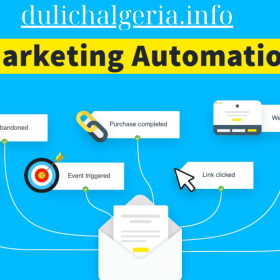Social media has become an essential part of modern marketing, but managing multiple platforms can be time-consuming and challenging. Social media automation allows you to streamline your processes, schedule posts, engage with your audience, and analyze performance, all while freeing up time for other important tasks. By leveraging the right tools and strategies, you can maintain an active, consistent, and optimized social presence. This guide explores how to effectively manage social media automation to maximize your impact.
1. Understanding Social Media Automation
a. What Is Social Media Automation?
Social media automation refers to using software tools to schedule posts, manage content, interact with followers, and analyze metrics without manual intervention. These tools allow you to plan your social media strategy in advance and ensure consistency across platforms, making it easier to manage multiple accounts simultaneously.
b. Why Use Automation?
Automation can save significant time and effort, allowing you to focus on more strategic aspects of your social media campaigns. It ensures that your content is published consistently, even when you’re not actively online, helping you maintain a steady presence and engage with your audience around the clock.
2. Benefits of Social Media Automation
a. Consistent Posting Schedule
One of the biggest advantages of automation is the ability to maintain a consistent posting schedule. Posting regularly is crucial for engagement, but manually posting at optimal times can be challenging. Automation tools help schedule posts in advance, ensuring content is delivered consistently, even during off-hours.
b. Time Efficiency
Automating tasks such as scheduling posts, responding to comments, and analyzing performance frees up valuable time for other marketing efforts. It also helps manage multiple platforms from a single dashboard, reducing the time spent switching between accounts.
c. Better Analytics and Performance Tracking
Many automation tools provide in-depth analytics that help you monitor your social media performance. By analyzing data such as engagement rates, follower growth, and click-through rates, you can refine your strategy and make data-driven decisions to improve your content.
d. Improved Engagement
Automation tools often include features like auto-responses, scheduled comments, or notifications for user interactions, allowing you to engage with your audience promptly. Automated responses ensure followers receive immediate feedback, improving customer service and engagement.
3. Choosing the Right Automation Tools
a. Buffer
Buffer is a popular social media automation tool that allows you to schedule posts for multiple platforms, analyze performance, and manage engagement. It’s user-friendly and ideal for businesses looking to maintain a steady content schedule.
- Features: Post scheduling, analytics, team collaboration, and automated content curation.
b. Hootsuite
Hootsuite offers an all-in-one platform for scheduling posts, managing social media accounts, and tracking performance. It supports a wide range of platforms and offers detailed analytics for optimizing campaigns.
- Features: Post scheduling, social listening, analytics, and collaboration tools.
c. Sprout Social
Sprout Social provides a comprehensive suite of tools for managing your social media presence, including scheduling, publishing, engagement, and reporting. It also offers social listening and CRM features to help you better understand and engage with your audience.
- Features: Post scheduling, engagement tracking, audience targeting, and advanced analytics.
d. Later
Later focuses on visual platforms like Instagram and Pinterest, making it a great choice for businesses that rely on visuals to engage their audience. The drag-and-drop scheduler allows you to plan your content visually.
- Features: Visual content planning, post scheduling, and analytics for Instagram and Pinterest.
4. Scheduling Content Strategically
a. Plan Ahead with a Content Calendar
A content calendar is an essential tool for organizing and scheduling your posts in advance. Use automation tools to schedule posts for specific times and dates when your audience is most active. This helps maintain consistency and ensures that your content aligns with key events, promotions, and marketing campaigns.
b. Optimize Posting Times
Most automation tools offer insights into the best times to post based on when your audience is most engaged. Schedule your content for these optimal times to maximize reach and engagement. This ensures your posts get the most visibility and impact when your followers are online.
c. Diversify Your Content
Automation allows you to plan and schedule a variety of content types in advance, including blog posts, infographics, videos, and user-generated content. Diversifying your content keeps your audience engaged and makes your social media feed more dynamic.
5. Automating Engagement and Interactions
a. Use Auto-Responses for Quick Engagement
Many automation tools allow you to set up auto-responses for common questions or comments. This ensures your followers get timely replies, which can improve engagement and customer satisfaction. Be sure to customize these responses to maintain a personal touch.
b. Schedule Comment Moderation
You can automate the moderation of comments and interactions by setting up filters that detect spam or inappropriate language. This feature keeps your social media accounts clean and professional, even when you’re not actively monitoring them.
c. Create Alerts for Important Interactions
Set up notifications or alerts for specific interactions, such as mentions of your brand, questions from followers, or comments that require immediate attention. Automation tools can flag these interactions, allowing you to respond promptly.
6. Leveraging Social Listening Tools
a. Monitor Brand Mentions and Hashtags
Social listening tools allow you to monitor what people are saying about your brand, products, or industry across social media platforms. This helps you track brand sentiment, identify potential leads, and engage with relevant conversations.
b. Engage in Industry Trends and Conversations
By keeping an eye on trending hashtags or keywords, you can join conversations that are relevant to your industry or audience. Automation tools can alert you to these trends, helping you engage in real-time and boost your brand visibility.
7. Optimizing Content with Data-Driven Insights
a. Use Analytics to Improve Performance
Automation tools provide in-depth analytics on post performance, engagement, and audience demographics. Use these insights to evaluate which types of content perform best and adjust your strategy accordingly. Focus on metrics like engagement rates, CTR, follower growth, and conversions to measure success.
b. A/B Test Content
Automated tools allow you to run A/B tests on different posts to determine which headlines, visuals, or formats resonate most with your audience. Use the results of these tests to refine your content strategy and optimize future posts for higher engagement.
8. Best Practices for Social Media Automation
a. Maintain Authenticity
While automation helps streamline processes, it’s important to maintain authenticity in your interactions. Don’t rely too heavily on automated responses; ensure real human engagement when necessary. Followers value genuine interaction and personalized responses.
b. Regularly Review and Update Automated Posts
Automation doesn’t mean you can set it and forget it. Regularly review your scheduled posts to ensure they remain relevant and aligned with your current marketing goals. Be prepared to pause or adjust posts in response to breaking news, holidays, or other events that might affect your audience’s mood or behavior.
c. Avoid Over-Automation
Automation can save time, but over-automating can make your social media presence feel impersonal. Balance automation with real-time posts and live interactions to create a more engaging and authentic experience for your audience.
Conclusion
Social media automation offers powerful tools for managing your online presence, ensuring consistency, and maximizing efficiency. By automating tasks like post scheduling, engagement, and analytics, you can streamline your social media strategy and focus on higher-level marketing efforts. However, it’s important to balance automation with authentic interactions to maintain a personal connection with your audience. Start incorporating automation tools into your social media management today to enhance your presence, boost engagement, and optimize your marketing efforts.


